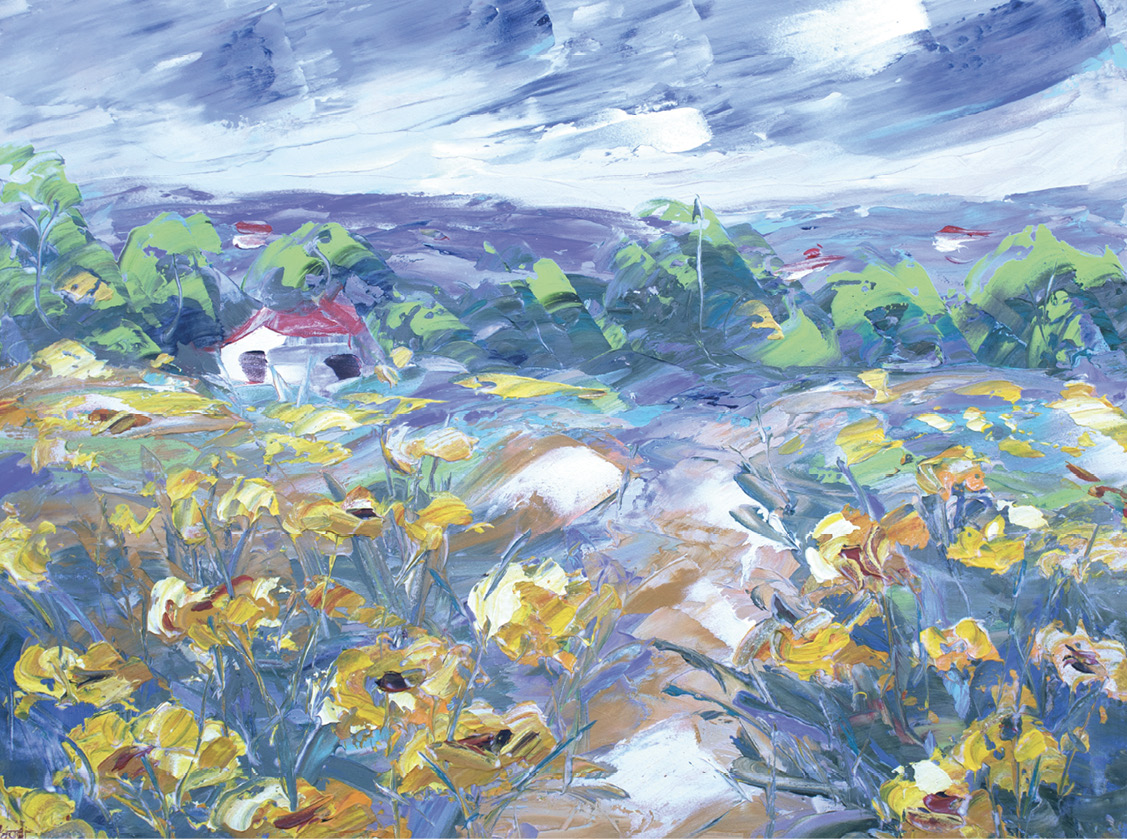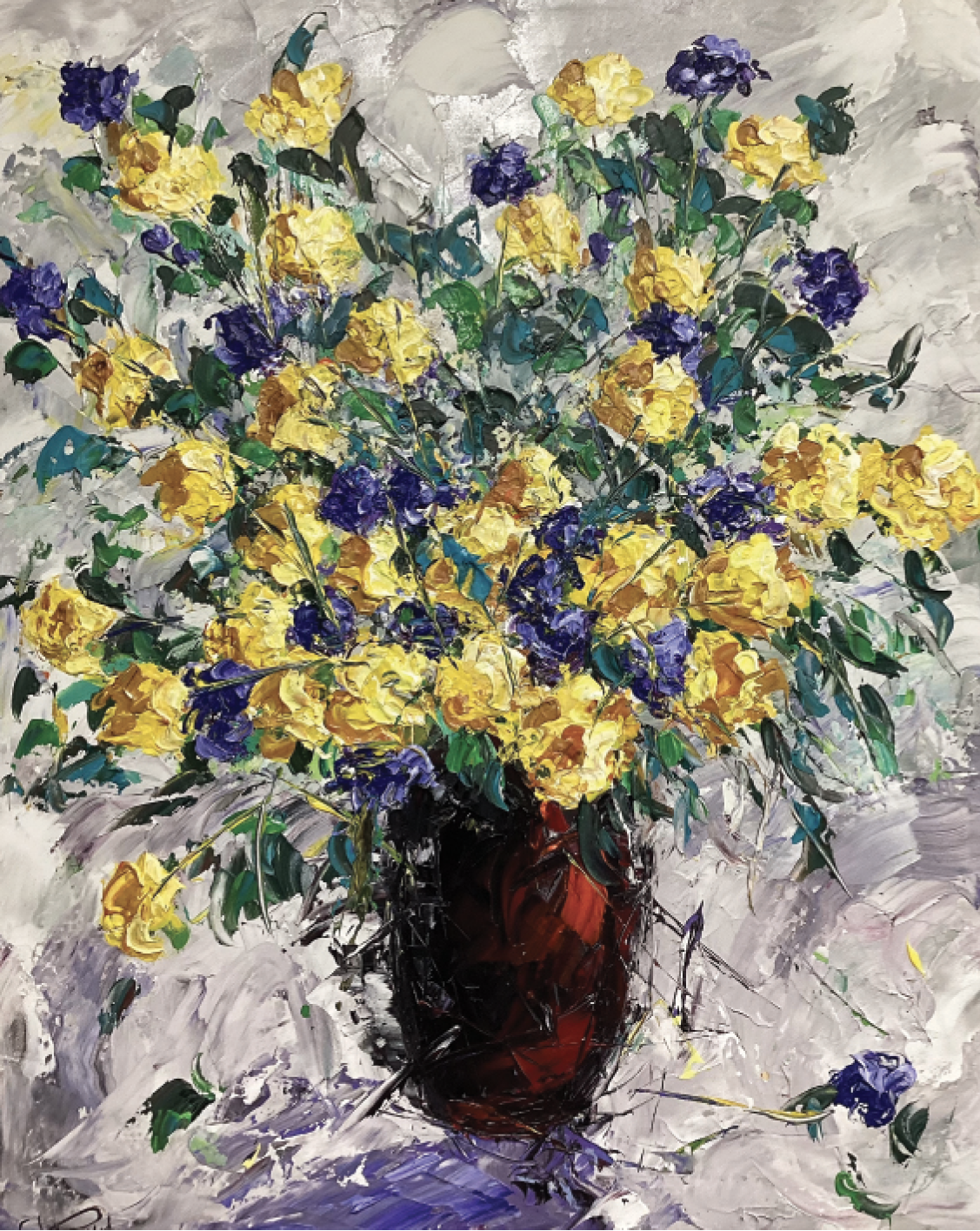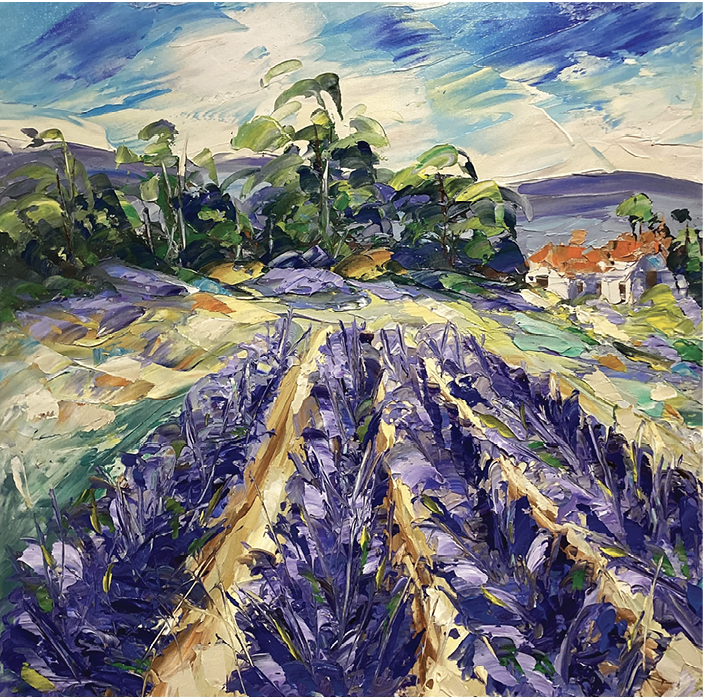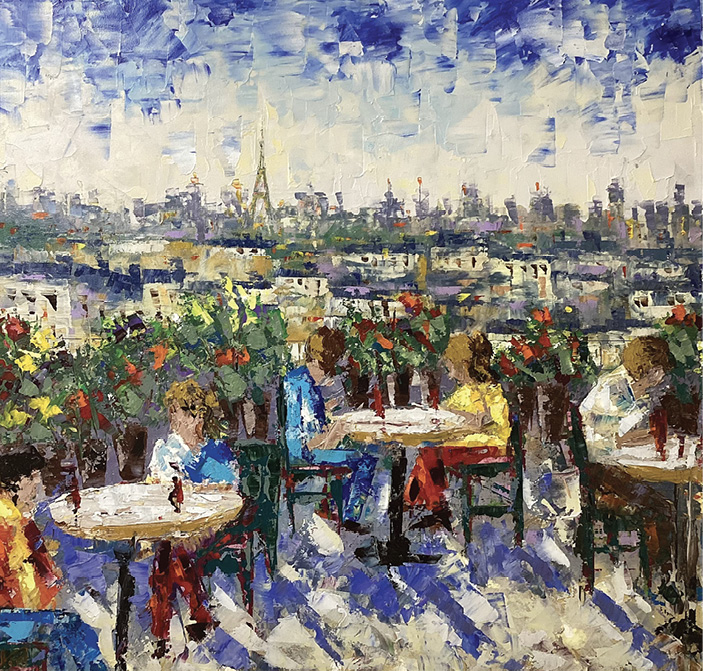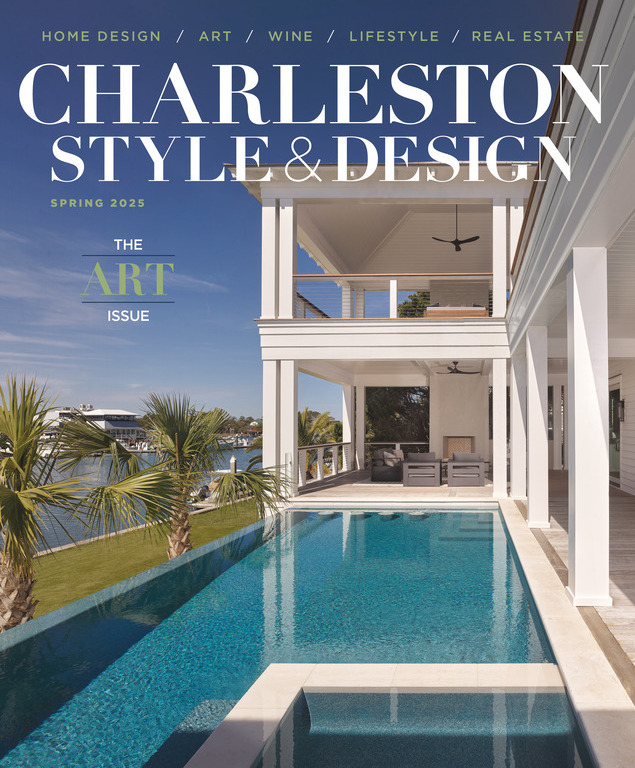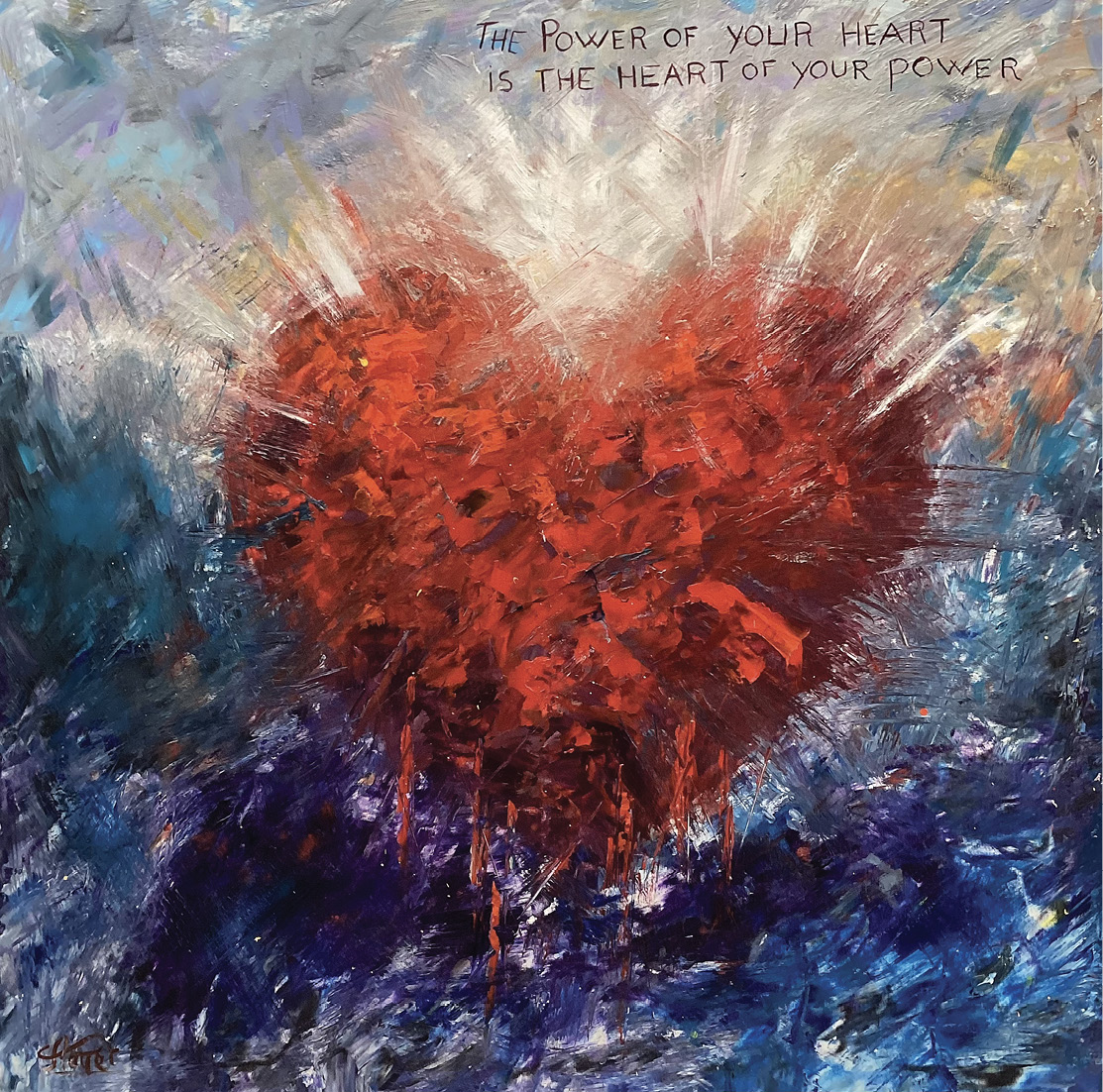
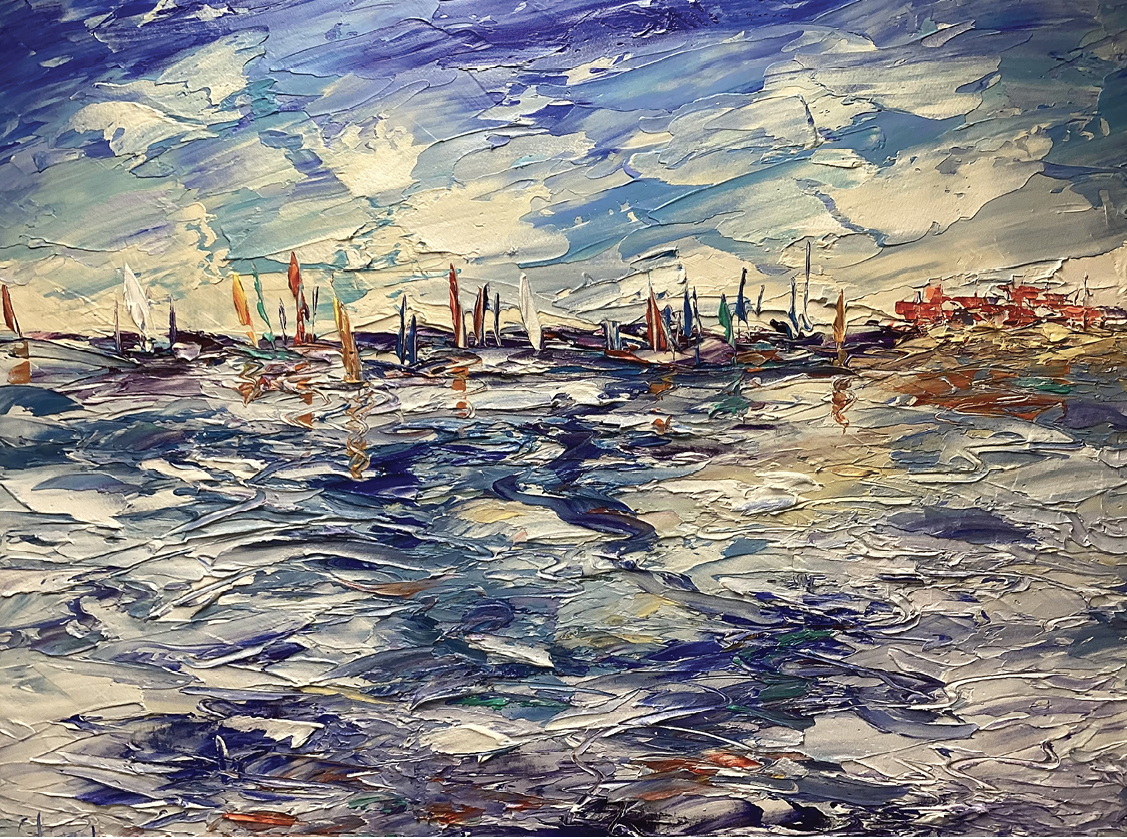
Artist frederic payet is known for creating vibrant, textured paintings that draw inspiration from the natural beauty of the places he loves. Born in Madagascar while it was a French colony, Payet’s family moved back to France when the island gained independence in 1960. Payet lived and worked in France until he was 29, then moved to the United States when his father relocated to Danbury, Connecticut. After two years in the North, he moved to Atlanta, where he lived for 23 years, working in the restaurant industry. It wasn’t until he was presented with a unique job opportunity at 33 that he became interested in art.
“My father’s brother had a gallery that sold antique paintings,” Payet says. “He asked if I would be interested in working for him, but I hesitated because I didn’t know anything about art. He said he would teach me, so I took the job. I got so inspired by what I saw in the gallery that I started painting.”
Payet began working on his first oil painting, a 12-by-16-inch copy of an old master with a different color palette, in his uncle’s gallery. The paint was still drying when his first client found him. “Of course, you don’t expect to sell your first painting,” Payet says. “I was just trying to learn, but a woman came in and asked if I was the artist. I said I was, and she asked me how much the painting was. I told her it was my first, and it was not for sale. But she said, ‘Everything is for sale. Everything has a price. How about $100?’ I sold it to her. To me, that was the universe saying, ‘OK, now you know what to do.’”
After building up an inventory, Payet held a show at Scott Antique Markets, the legendary monthly antiques and interiors market at the Atlanta Expo Centers. During the show, he sold $7,000 in work and immediately knew he wanted to be a full-time artist.
Though Payet learned to paint using traditional tools, a trip to Miami with his uncle would be a turning point in his career. “I learned to paint by copying other artists,” he says. “I started with oil and a brush, but I had some allergies to the oil paint. My uncle and I were visiting a gallery in Miami, and I saw a Russian artist painting with a palette knife. I made my uncle go with me right then to an art store to buy supplies. I immediately felt really comfortable with the knife. It was incredible, and my work took off when I switched.”
From that point, Payet left behind oil paints and brushes and began painting with a palette knife and modeling paste mixed with acrylic paint. These materials and techniques give his work the signature texture and sense of movement of impressionistic works.
Payet returns to France every year and frequently works from photos or memory, often capturing Parisian cityscapes, seascapes from the French Riviera and landscapes from Provence. As he works, he listens to his intuition. “I am big on color therapy and the frequency of colors,” he says. “Since I started painting, I’ve always felt strongly that color vibrations can uplift the mood, stimulate emotional response and bring emotional healing in the mind and body. My clients say my works bring them joy and happiness.”
In his work South of France, a colorful regatta of sailboats jockey for position among the blue and turquoise rolling waves of the Mediterranean Sea. Lavender Eze captures lavender fields in full bloom before a picturesque medieval village. In Le Luberon, a blue stream whose banks are lined with red poppies, flows toward the famous Luberon mountains in Provence.
After 23 years in Georgia, Payet moved to Ashville, North Carolina, and opened a gallery of his work. Tragically, after seven years as part of the legendary arts community, he lost everything when the remnants of Hurricane Helene hit the city, wiping out the Arts District. “My home was not harmed, and I was able to salvage a few paintings from the gallery. Otherwise, everything was gone,” he says. His website catalogs sold paintings alongside those that were destroyed, a touching reminder of the resilience of the many artists and gallerists, such as Payet, who suddenly found themselves starting over.
If there can be a silver lining to such tragedy, the artist had recently married, and the couple had already decided to move to Charleston and open a gallery. “We’d been vacationing in Charleston for years, and we knew we felt really good here,” he says. “Two weeks before the storm, we found a house and a gallery on Broad Street. And then the storm hit, and we had to move up the timelines and start from scratch.”
The beautiful new Frederic Payet Gallery at 13 Broad St. features the artist’s originals, as well as works from other artists. The gallery’s location is in the heart of Charleston’s Historic District, amid the city’s most prestigious art galleries and cultural institutions. The renovated historical building features soaring ceilings and original architectural details that create an ideal backdrop for the gallery’s diverse collection of contemporary and classical works.
“This is something different for Charleston,” Payet says. “This is an international gallery; we have some old masters as well as works by Russian, Australian, Cuban and French artists. As the gallery evolves, my wife and I want to travel the world and find artists who are emerging and bring something new to the city.”
The gallery, which celebrated its grand opening on February 15, features work that is an evolution for the Charleston fine art scene. Stéphane Catalano, Payet’s childhood friend, uses 24-karat gold leaf on aluminum panels to create striking graphic and figurative compositions. His work Invictus Mandela, which was exhibited at the Grand Palais in Paris and won first prize, uses typography to form a sophisticated portrait of the beloved revolutionary leader.
Contemporary American artist Abigail Gutting’s paintings portray the culture and wildlife of the American West. Works by Australian artist Lorraine Lewitzka capture figurative subjects in everyday moments. Fleetwood Covington’s works on metal capture the essence of the rural South in black oil on tin, giving them an artifact-like quality. Other works in the gallery are by French artist Serge Lescure.
There is also a rare work by renowned Lithuanian artist Arbit Blatas, who died in 1999. Blatas, a contemporary of Picasso, Bonnard and Utrillo, was the youngest member of the legendary School of Paris. The gallery also has a few signed lithographs by legendary Spanish artist Salvador Dalí.
Looking ahead, Payet plans to expand the gallery’s roster of represented artists while maintaining his commitment to presenting work that challenges and enriches Charleston’s artistic dialogue. He is particularly interested in artists who, like himself, bridge multiple cultural traditions and creative approaches. As Charleston’s art scene continues to gain national recognition, the Frederic Payet Gallery is a vital part of the city’s growing sophistication and openness to diverse artistic voices. *
Robin Howard is a freelance writer in Charleston. See more of her work at robinhowardwrites.com.
